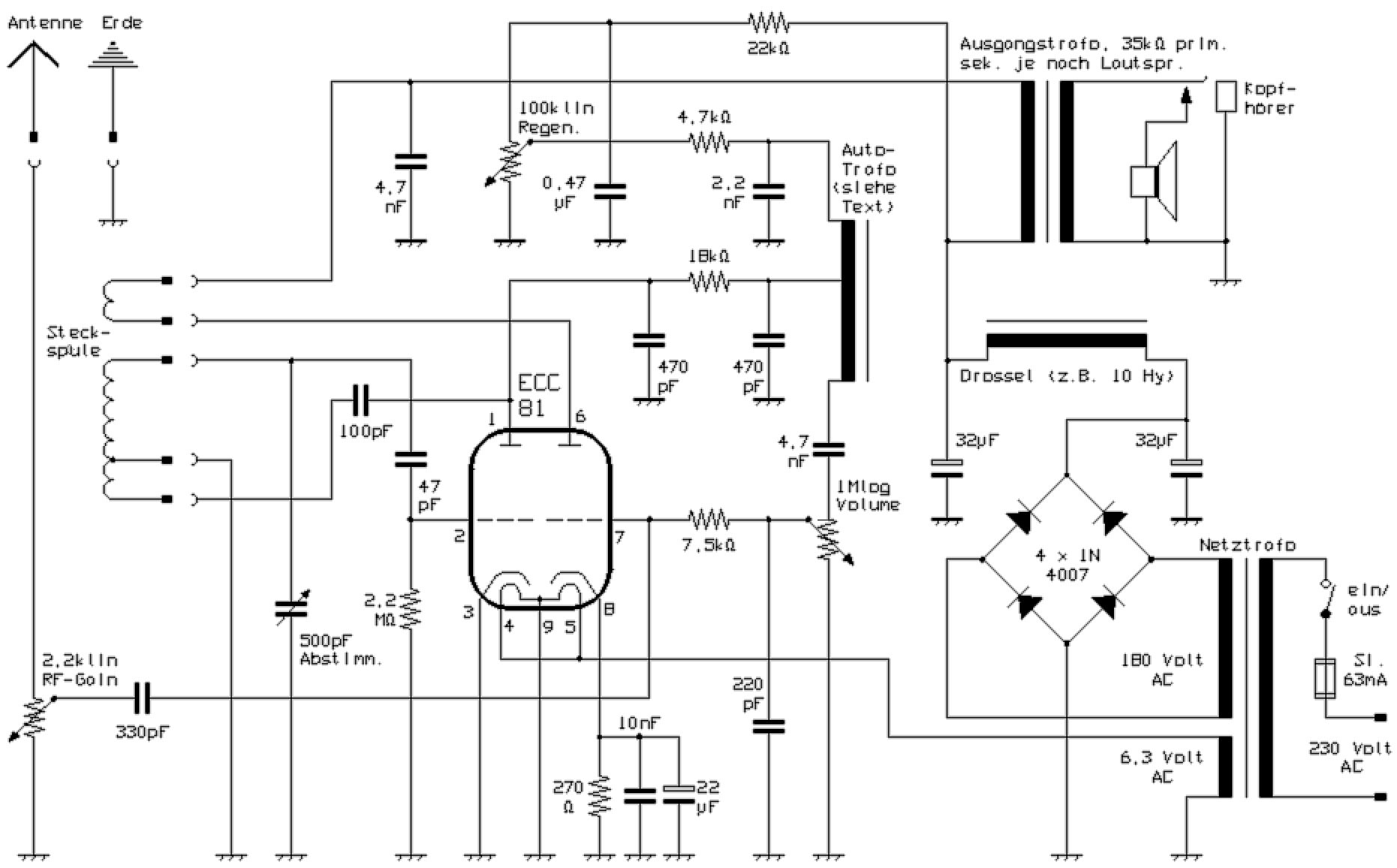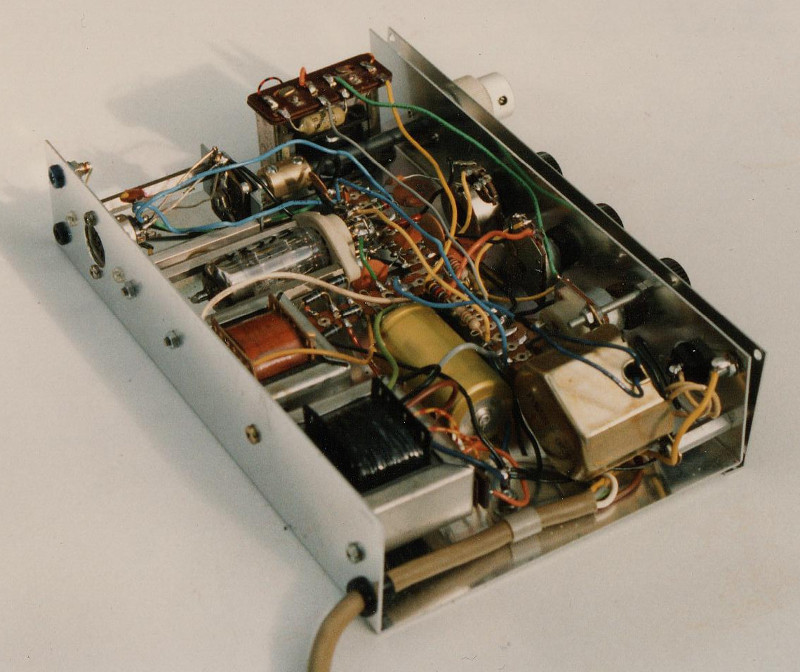Single tube shortwave receivers
To anyone who wants to deal with the construction of receivers, I still recommend today to make initial attempts with a regenerative receiver. This is very instructive and one develops a feel for the behavior of oscillating circuits and the mechanical requirements of the tuning devices. My first attempts at simple regenerative receivers made with transistors did not lead to the hoped-for success. To make matters worse, that the transmission tower of the Hamburg medium wave transmitter was not far away from us. The transmitter, which until recently was operating at 972 kHz, could be heard virtually over the entire waveband with each circuit. It was therefore hardly possible to receive other channels. At first, even a blocking circuit inserted into the antenna line barely changed anything.
I then built my first really well-functioning regenerative receiver with tubes. Here, the much smaller damping of the resonant circuit by the high-impedance tube input made advantageous noticeable. With a tuned to the medium-wave local transmitter blocking circuit in the antenna cable, I was now able to achieve usable reception results, without the powerful medium-wave transmitter knock through everywhere. One triode system of the ECC81 worked as an audion detector, the other as an audio amplifier. The regeneration adjustment was made via a rotary variable capacitor. At 80m and 40m, the device worked quite good. But it was disadvantageous especially when receiving SSB and CW stations, however, that changed the reception frequency not insignificant with the setting of the regeneration feedback. Above about 10 MHz, the device was therefore actually only usable for the AM reception. After all, depending on the propagation conditions strong broadcasting stations in the entire spectrum of the shortwave were so loud receivable that the gain of the single-stage audio part was sufficient for speaker reception. For the amateur radio reception, however, a headphone had to be used.

With such a tube circuit, the words of Heinz Richter, which he wrote in his "Neues Bastelbuch für Radio und Elektronik" (New Tinker Book For Radio And Electronics) in context to the Trabant KM presented there, came true for me for the first time with a completely self-built device: „Those who are concerned with the reception of shortwaves, will probably like to give up the night's sleep and into the early morning hours enthusiastically turn the tuning knob of his shortwave receiver. The reception of shortwave is extremely exciting, numerous stations from all parts of the earth can be heard. It can happen that the announcer of any station with the good night greeting say goodbye to the listeners, while at the same time from another distant station a morning greeting arrives.“
Based on the experience with this circuit, I developed a simple regeneration receiver that shows some finesse with little effort. This device was again only equipped with a double triode of the type ECC81. In this circuit, the right system of the tube ECC81 simultaneously acts in a so-called reflex circuit as audio amplifier and as aperiodic RF preamplifier. In this way, the resonant circuit is well decoupled from the antenna.

The triode audion detector built with the left system works stably and without significant oscillation holes. It is also characterized by a gentle onset of feedback. The regulation of the feedback by changing the anode voltage leads depending on the setting only to small frequency alterations. A so-called autotransformer between the stages ensures optimum adaptation and thus good gain and loudspeaker reception sufficient gain reserve. On the then still compared to today considerably occupied SW bands could be received with this circuit in the mid-1970s, various radio stations, f.e. amateur radio stations, maritime radio, broadcast, military stations, intelligence agencies and numerous other radio services. Today, such a device is still good for the reception of analog radio stations and for amateur radio reception.
For shortwave AM radio reception, the feedback should be adjusted so that the detector stage just does not start to oscillate. If the potentiometer is turned beyond this point, transmissions in morse telegraphy and single sideband Modulation (SSB) can be heard clearly, so that amateur radio stations can be received with this setting. The most important for this is a sufficient exactly adjustment. In this reason the variable capacitor must be provided with a fine drive. Optionally, instead, a smaller capacity (e.g., 12 pF) variable capacitor may be connected in parallel with the tuning capacitor for fine tuning.

I would like to point out that the assembly of this receiver is not uncritical! The reflex circuit must build up very carefully. Short cable routing is essential! This is especially true for all blocking capacitors! For the construction of this device I wanted to get the maximum of receiving power from a single tube. As an entry-level object, the circuit is by no means suitable. For the beginner, I recommend initially to build the first receiver.
A suitable audio transformer is hardly obtainable today. I won it by wrapping a small output transformer (about 5000 turns, tapping at 1000 turns). A usable substitute could certainly be created from an interconnection of two different transformers.